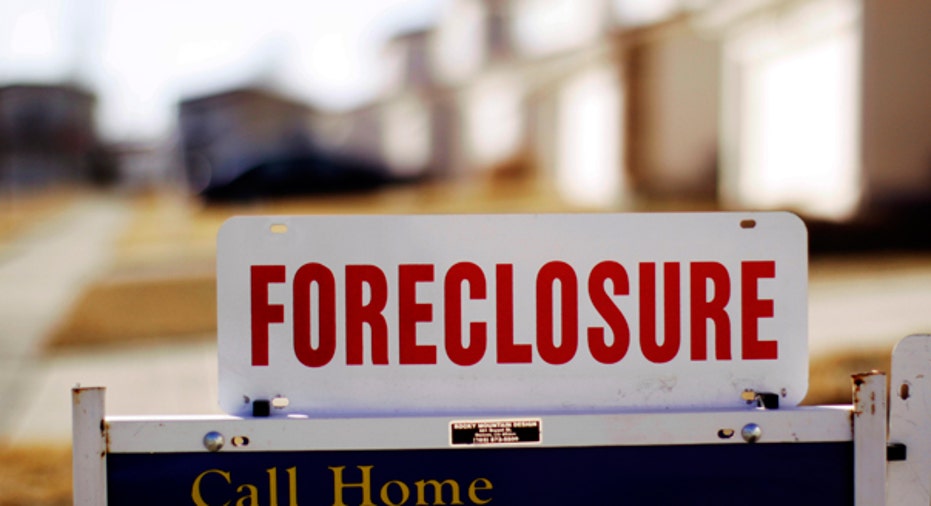Banks Reworking Loans Means Fewer Foreclosures

Foreclosures have fallen to their lowest levels since the start of the 2008 financial crisis and a primary reason is that banks are now favoring loan modifications over the more traditional response of tossing delinquent borrowers from their homes.
It took the better part of five years and a $25 billion government-enforced settlement, but the nation’s biggest lenders seem to have finally reached the conclusion that keeping people in their homes under revamped payment plans is financially preferable to the often costly and time-consuming foreclosure process.
The obvious question is, ‘what took them so long?’
Before painting the banks as villains it’s important to note that prior to the subprime mortgage crisis that burst the wildly-inflated U.S. housing bubble last decade there was no precedent for reworking home loans. It just wasn’t done.
The banks had to figure out a process for loan modifications on the fly, as millions of Americans sought to rework loans they could no longer afford.
“It used to be when people didn’t pay their mortgage they were foreclosed on. That was how it worked and I believe in that,” said Leif Thomsen, founder and chief executive of Walpole, Mass.-based home-loan lender Mortgage Master Inc.
That being said, as the economy has slowly begun to heal and home prices have started to rise again in many regions of the country, it simply makes more sense now for the banks to modify loans for some delinquent borrowers rather than foreclosing.
As Thomsen pointed out, it frequently costs the bank more money to foreclose than to rework loans under terms more favorable to the borrower. With foreclosure, “you have to bring lawyers on board and that’s always expensive. And you often have to evict, which means you have to hire a local constable. No one really wanted that option but there were times when you really had to do it,” he said.
Incentive To Stay In Home Much Higher Now
For many homeowners, meanwhile, the incentive to stay in their homes has dramatically increased as the value of their homes has begun to rise again. When home prices were falling the incentive was the opposite – get out as quickly as possible and cut your losses.
“There needs to be more consistency on the part of both sides.”
The Office of the Comptroller of the Currency said earlier this week that the 156,773 new foreclosures initiated in the fourth quarter of 2012 by the largest U.S. banks was the lowest figure since the first quarter of 2008.
The OCC attributed the fourth-quarter decline in foreclosures in part to loan servicers that are now choosing alternatives to foreclosure, offering 367,169 “home retention actions” – i.e.., loan modifications – against 169,064 home forfeitures during the same period.
On another positive note, the OCC reported that the number of “home retention actions” offered by banks last quarter was down more than 20% from the fourth quarter of 2011, which means significantly fewer homeowners are finding it necessary to seek loan modifications.
“I think there are many situations where it makes more sense for a borrower to rework than move out,” said Benjamin Yrungaray, a foreclosure defense attorney with De Novo law firm in Southern California, an area particularly hard hit by mortgage defaults.
Yrungaray said nearly all of his clients who were seeking short sales on homes valued less than their mortgage have instead been offered loan modifications, which represents a big change in strategy from years past. The attorney also said he’s seen a “huge” increase in the number of modifications offered on loans held by government entities Fannie Mae and Freddie Mac.
The big lenders, according to Yrungaray, have realized that loan modifications are a “necessity” if the banks hope to get a return on their investments.
“Plus the $25 billion settlement a year ago made it clear that if the banks didn’t start to cooperate there would be other repercussions,” he added.
More ‘Consistency’ Needed from Banks, Borrowers
In February 2012, five of the biggest U.S. lenders -- Bank of America (NYSE:BAC), Citigroup (NYSE:C), J.P. Morgan Chase (NYSE:JPM) Wells Fargo (NYSE:WFC) and Ally Financial -- agreed to settle federal and state charges that the banks had mishandled millions of foreclosure procedures through so-called “robo-signings” in which foreclosures were rubber stamped without proper oversight.
On average, according to the OCC, banks that reworked loans last quarter outside of federal assistance programs were able to reduce borrowers’ monthly payments by $389, or more than 25%. Loans revamped through the government's Home Affordable Modification Program (HAMP) lowered payments on average by $558, or more than 35%.
Both figures would certainly help out most U.S. households, but a heavy dose of reality always manages to creep back into this complicated issue: for instance, more than 50% of the modified loans approved since the banks began to offer revamped terms a few years ago have eventually also fallen into delinquency.
Linda Harradine, executive director of Legal Aid of Manasota on Florida’s Gulf Coast, another area hard hit by foreclosures, said the decline nationwide in foreclosures due in part to an increase in loan modifications is “absolutely a positive sign.”
“But we aren’t where we should be,” Harradine said. “There needs to be more consistency on the part of both sides.”
The banks, according to Harradine, need to conduct thorough reviews of loan modification candidates to ensure that borrowers have the wherewithal to pay the reworked loan.
Moreover, homeowners need to be more “realistic,” she said. Specifically, borrowers have to be willing to acknowledge that saving $400 a month or so on a revamped home loan isn’t likely to cover income that disappeared because the homeowner lost their job.